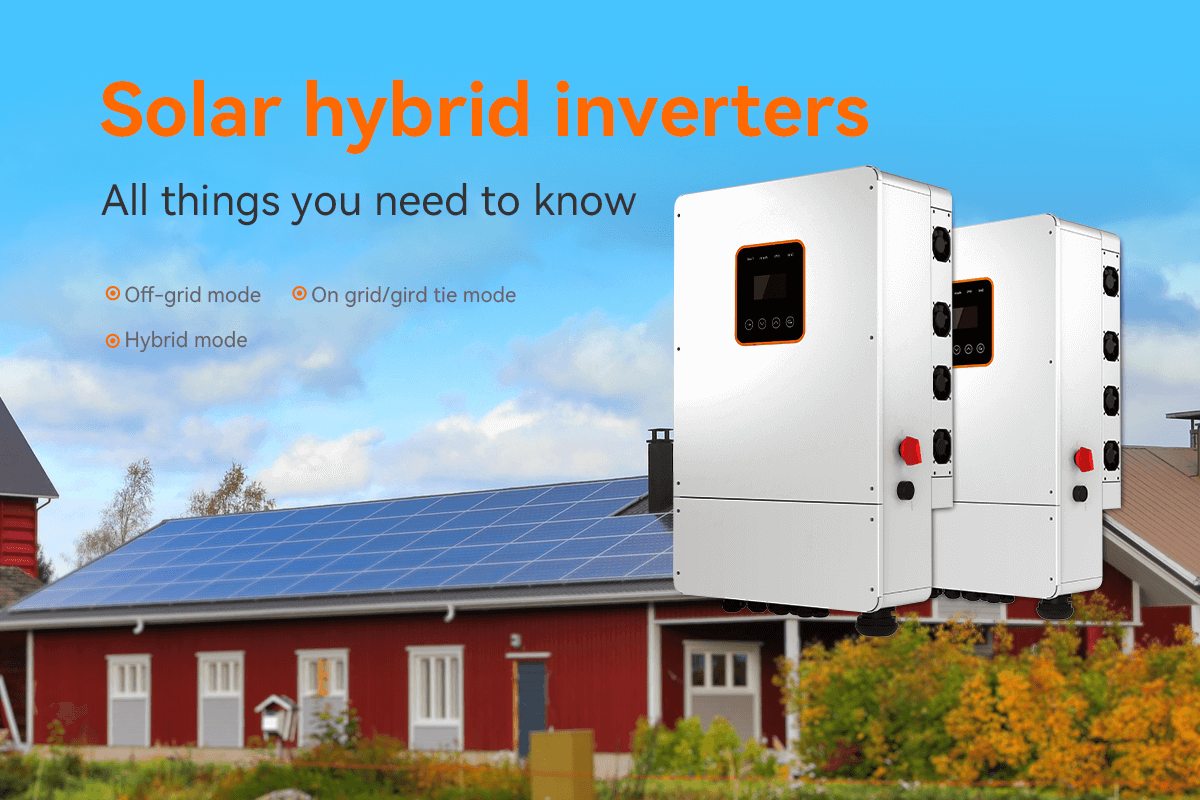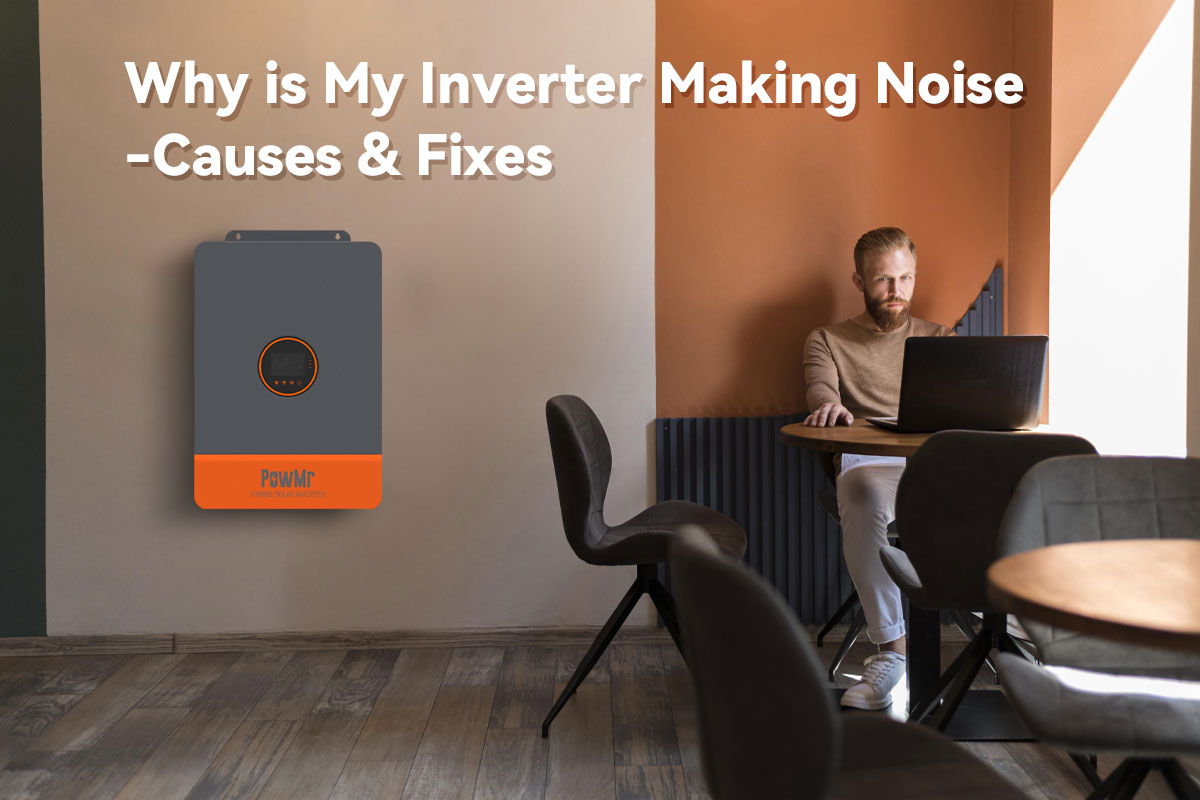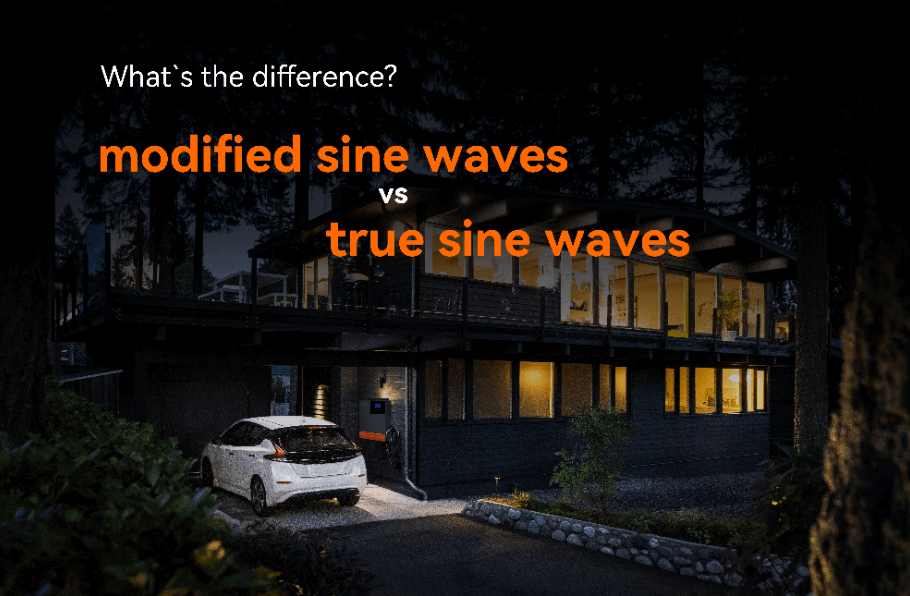An inverter is an equipment that converts direct current (batteries, accumulators, etc.) into alternating current. In the professional field, inverter only refers to a machine that can change direct current into alternating current. Rather, a converter that can change current from AC to DC is called rectifier. Inverter and rectifier are both machines that can change the nature of the current, so both are converters.
At present, there are many different types of inverters in the photovoltaic industry. More often than not, the function of an inverter does not only include invert, but also rectification, regulation of voltage and frequency, etc.Therefore, the term "inverter" is often used commercially, different from the academic sense of inverter.
In the photovoltaic industry, inverters are mainly divided into PV inverters, off-grid inverters, on-grid/grid tie inverters and hybrid inverters.
What is solar hybrid inverter?
Hybrid inverters can be understood as an integration of solar grid tie inverter and off-grid inverter,which transmit the solar photovoltaic energy and the additional energy from the batteries to the grid and recover the electricity from the grid when the energy generated by renewable energy sources is insufficient. In other words, these inverters can operate as off-grid inverters and as grid tied inverters depending on the situation of the load.
In addition, the hybrid inverter has integrated intelligent modules for energy management and data transmission, making it an electrical apparatus with a high level of technological sophistication. The hybrid inverter is the heart and brain of the entire energy storage system by connecting, monitoring and managing modules such as photovoltaic solar panels, solar controller, loads and the grid.
How does a hybrid inverter work?
The function of the hybrid inverter varies depending on the load. As a rule, the user can set the hybrid inverter to give priority to energy from the mains, batteries or photovoltaics, and to charge the battery or power the load first, depending on the actual requirements.
So, here we have divided the operating modes of the solar hybrid inverters into the following three categories according to the equipment they are connected to.
Off-grid mode
Off-grid mode means that the inverter supplies its own power to the load without being influenced by the grid. If the solar energy provides enough power for the load, the excess power is stored in a battery. Otherwise, the battery and the solar panel supply the load at the same time.
On grid/grid tie mode
On grid/grid tied mode means that in the entire photovoltaic system, only the PV and the grid can operate, and the battery cannot, in which case the hybrid inverter acts as an ordinary PV inverter. If the solar panels can generate enough electricity, they deliver it to the grid, and if not, they take it in from the grid.

Hybrid mode
In this mode, the inverter is connected to the grid, battery, solar panels and loads at the same time. In this mode, the inverter has the following three operating conditions:
-
If there is a problem with the grid or when the photovoltaic energy is sufficient for the operation of the load, its function will change to that of an off-grid inverter. In this case, the changeover switch disconnects the inverter from the grid.
-
As soon as the photovoltaic energy starts to generate additional energy, the operating mode changes from off-grid to on grid mode. The inverter will change the frequency and phase of the current and start to transmit the additional energy to the grid.
-
Even when there is no solar energy, the inverter can power loads via the grid or batteries.
Are solar hybrid inverters worth it?
Make money feeding the grid
During the valley period (when the electricity price is low), the utility power charges the battery through the inverter. During peak hours (when the electricity price is high), the inverter is fully power output, and the battery power is fed to the mains power under the condition of meeting the load demand, so as to achieve the purpose of selling electricity on the grid. It not only reduces the pressure on the mains, but also takes the economic benefits brought by the peak-valley price difference for users.
Many countries currently have policies in place to support solar photovoltaic and feed the grid, and users will receive subsidies. However, the prerequisite is that the inverter has the local safety certification and the user has to apply to the local national grid department first. For users in Unites States, PowMr's solar hybrid inverter “SunSmart 10K” is well worth considering.
Off-grid power generation for emergencies
When the grid fails, the inverter's grid tie mode stops working and automatically switches to off-grid mode, and solar power continues to provide power to the load, allowing you to have power available in case of emergency. The remaining photovoltaic energy can also be stored in batteries.
Maximize the use of photovoltaic power
No matter what working mode, the system gives priority to the use of photovoltaic energy. When it is not enough, the power will be supplemented by mains or battery. If there is surplus electricity generated by photovoltaics, it will be stored in batteries or fed to the grid to maximize the use of photovoltaic power without wasting energy.




Leave a comment
This site is protected by reCAPTCHA and the Google Privacy Policy and Terms of Service apply.